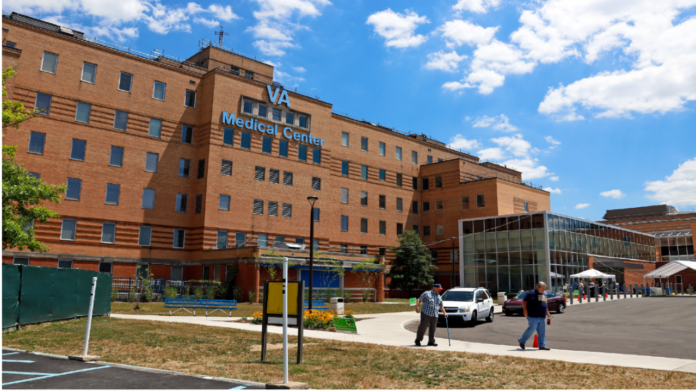When members of the U.S. Senate announced they would block confirmation of a nine-member commission that would have closed dozens of Veterans Affairs (VA) health care facilities across the country, it was a huge win for veterans, military families and our country. Lawmakers saw through the guise that closures would help “modernize” the VA and halted a pernicious privatization effort.
Now it’s time to make the investments necessary to truly modernize the VA, starting with addressing the chronic staffing shortages in the Veterans Health Administration (VHA).
For decades, members of my union, the American Federation of Government Employees (AFGE) National VA Council, have been alerting lawmakers, the media and the public of the well-known staffing crisis that exists within the department. We’ve testified on Capitol Hill, held rallies, and participated in countless news interviews to shed light on how understaffing negatively impacts those who rely on the VA for care. The VA’s own Office of Inspector General (OIG) recently released a report indicating that “severe occupational staffing shortages” at VHA facilities increased by 22 percent in just the last year.
This is not a new issue. In 2017, former VA Secretary David Shulkin spoke up about the 45,000 vacancies plaguing the VA health care system at that time. According to the VA’s most recently reported data, there are nearly 65,000 existing vacancies. A recent survey by the Veterans Healthcare Policy Institute found that 50 percent of respondents reported that beds, units or programs have been closed at their facilities due to staffing and budget shortages, even when there is patient demand for such services.
Over the past decade, the need for VA health care has increased. The fact that year after year, tens of thousands of positions have continued to go unfilled is completely unacceptable. This is particularly alarming, as front-line doctors, nurses, claims processors, food technicians, housekeepers, addiction and mental health specialists and others who care for our veterans are suffering burnout from constantly being asked to do more with less. The COVID-19 pandemic has only made things worse, shedding light on not only VA health care staffing shortages but the staffing inadequacies of our nation’s healthcare system as a whole.
When VA hospitals are understaffed, our veterans suffer. Approximately 3.5 million veterans recently had their VA health care benefits expanded following the enactment of the Honoring our Promise to Address Comprehensive Toxics (PACT) Act. In order to handle the imminent increased demand, it is imperative that VHA and Veterans Benefits Administration are fully staffed to ensure that healthcare professionals and claims processors are able to provide veterans timely, quality care. If the VA fails to fully staff its facilities, veterans will continue to be denied care and be sent to non-VA providers, even though most prefer to receive care at the VA.
Overworked VA health care workers at underfunded and understaffed hospitals, outpatient clinics and nursing homes across the country, have continued to provide world-class care because of their dedication and compassion for the veterans they serve.
Against these daunting odds, the VA workforce continues to show up each day to fulfill the promise “to care for those who have borne the battle.” In order for this to continue, the VA must invest more in its staff and infrastructure, committing to building new hospitals and clinics and modernizing existing facilities. Doing so would be a more veteran-centric, cost-effective strategy compared to forcing veterans to seek care from private healthcare providers who are more focused on financial gain than addressing the unique needs of veterans. Modernizing VA health care does not mean closures and outsourcing, as proponents of privatization argue; it means assessing the actual needs of veterans and investing in resources to meet those needs.
That’s what AFGE members have been fighting for over the past two decades and it’s what we are currently fighting for at the bargaining table. Although VA negotiators are resistant to negotiating, in good faith, proposals that will positively impact both veterans and employees, AFGE will continue to fight back. The VA must end its stalling tactics. The 283,000 VA employees represented by our union, a third of whom are veterans, have dedicated their lives to serving veterans and they deserve a strong union contract that ensures their ability to do their jobs safely and effectively.
The first step toward solving the VA’s staffing crisis is developing a model to assess staffing needs in each facility. A 2021 OIG report found the underlying cause of the VA’s staffing crisis was the lack of an adequate model or system to proactively and consistently identify staffing requirements and recommended the VA develop staffing models that track veterans’ needs at each facility and then realistically determine the number and type of workers required to meet those needs. This month marks a year since these recommendations were made, and we have yet to see a clear, actionable plan developed.
A staffing model is long overdue, and for it to be truly successful, the VA must seek input from its workforce and union partners.
If there’s one thing all Americans can agree on, it’s that veterans deserve better. Our union is ready to work with VA leadership to tackle these staffing shortages. The VA workforce is the department’s greatest asset, and they have been neglected for far too long. It’s time the VA start investing in them. It’s time to start investing in our veterans. It’s time to save our VA.
Alma L. Lee is president of the American Federation of Government Employees’ National Veterans Affairs Council representing 283,000 VA employees.
Saving the Veterans Administration means adequately staffing it
RELATED ARTICLES



